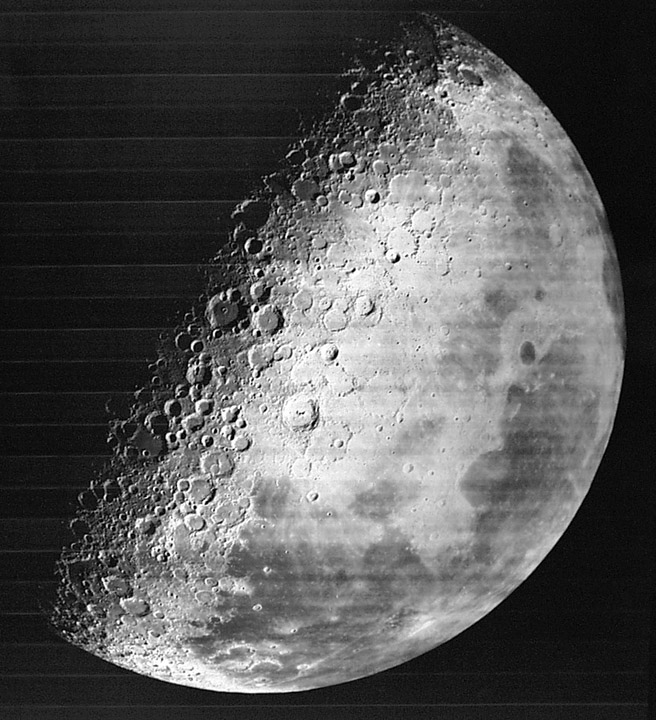While researching yesterday’s LPOD I came across this ancient (1967) image from Lunar Orbiter IV. This series of medium resolution images was probably the least successful of all American spacecraft imaging of the Moon for very many were ruined by overexposure or light leaks. But I like the ones that are good because of their very broad synoptic views of the Moon. And this one is fascinating because it shows the northwest limb of the Moon, which seems to be the area least often imaged by amateurs and least often studied by professionals. Why is this limb so unloved? One reason is that there are few striking craters here. Probably very few observers can name any crater other than Pythagoras along the limb region of this image. Second, the limb here is all highlands and thus lacks the domes and rilles that make the maria fascinating. (But the southwest limb is also all highlands and many people study Orientale, Bailly and other features.) And third, there are no basins in this area so there are no large circular rims, radial crater chains or surge deposits. Every other limb quadrant has two or more basins - I had never noticed that there are none in this region.
Technical Details:
Lunar Orbiter IV spacecraft with Schneider Xenotar wide-angle lens (focal length of 80 mm at f5.6) and onboard developing of film.
Related Links:
Rükl plates I and VIII
Lunar Orbiter
Yesterday's LPOD: An Unlocated Smart Image
Tomorrow's LPOD: Lights in the Sky
COMMENTS?
Register, Log in, and join in the comments.




